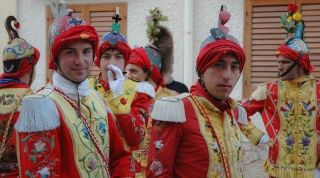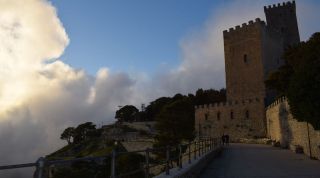Sicily was once called “Trinacria” because of its shape. The island lays in the middle of the Mediterranean. It has been conquered by many populations, and each of them left a contribution to make Sicily the way it is now. “Siculi”, “Sicani”, “Elimi”, were just some of the first inhabitants.
A rich land with a mild climate, Sicily has always been ready to open its doors to everyone: the Greeks started moving to Sicily from the 8th century B.C. , looking for vergin lands to cultivate. Rome conquered Sicily in 241 B.C. and agriculture was improved in that period so that it was called “Cornfield of Rome”. The Bizantine Empire gave the input to build the typical Greek church plan. The Arab influence was probably the most productive and lasting one. The Arab period made Sicily the pearl of the Fatimid art. It left a heritage of castles, places of pleasure surrounded by gardens that smelt of blossom and jasmine, and crowded markets full of noises.
Then was the turn of the Normans and the Swabians who reinforced Cristianity. “Bulwarks of faith” such as Cefalù and Monreale Cathedrals are masterpieces of Byzantine and Norman-Arab art. The Angevin domination has left lots of echoes of the French language in the Sicilian dialect: for example the term “Vucciria” (a typical market in Palermo), derives from the French “ boucherie” (butcher). When we hear this word, it evokes the same ritual and visceral gestures used to cut meat. The Aragoneses and the Hadsburgs built strongest defense walls because of the pirate attacks from the sea. Through the Savoys and the Bourbons, the destiny of Sicily was melted together with the rest of Italy to form a united Italy in 1860. Despite this cultural melting pot, Sicily remains unique and preserves the different aspects assumed through the centuries as an element of strength.

Roberta Di Rosa
Licensed tour guide
Book a trip or a tour now
Call me or send me an e-mail
+39.329.1263.099info@robertadirosa.com

